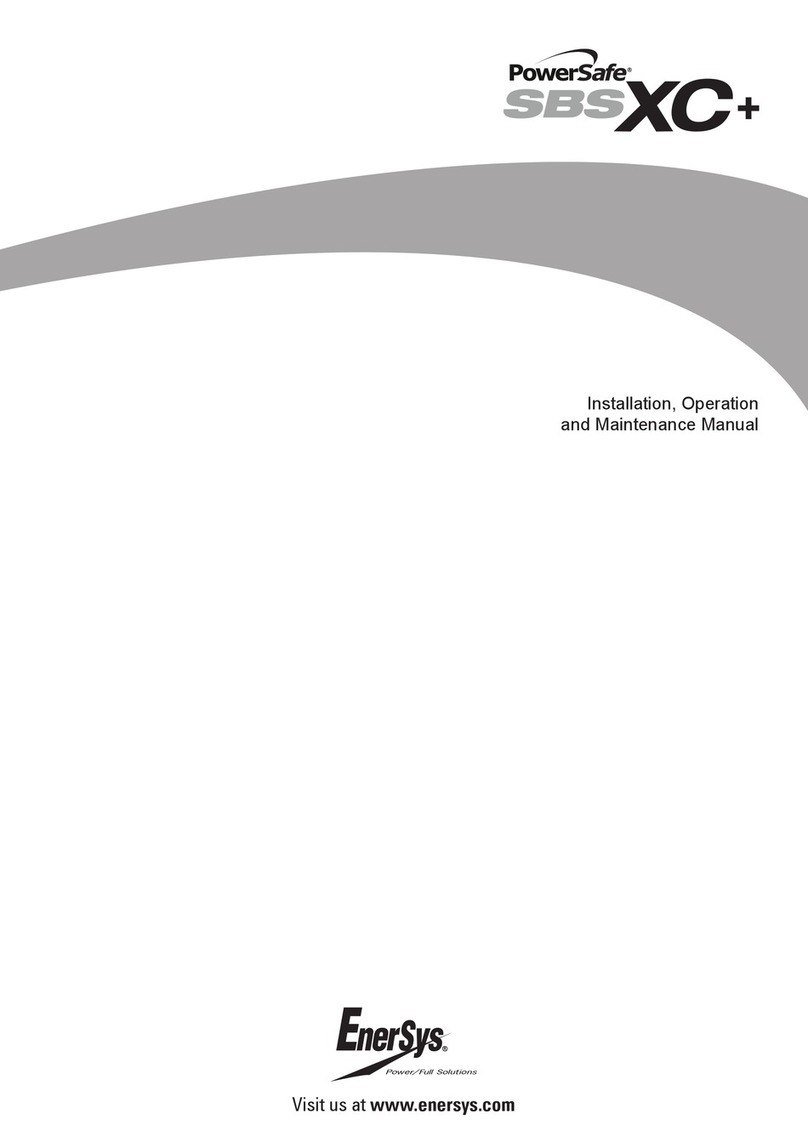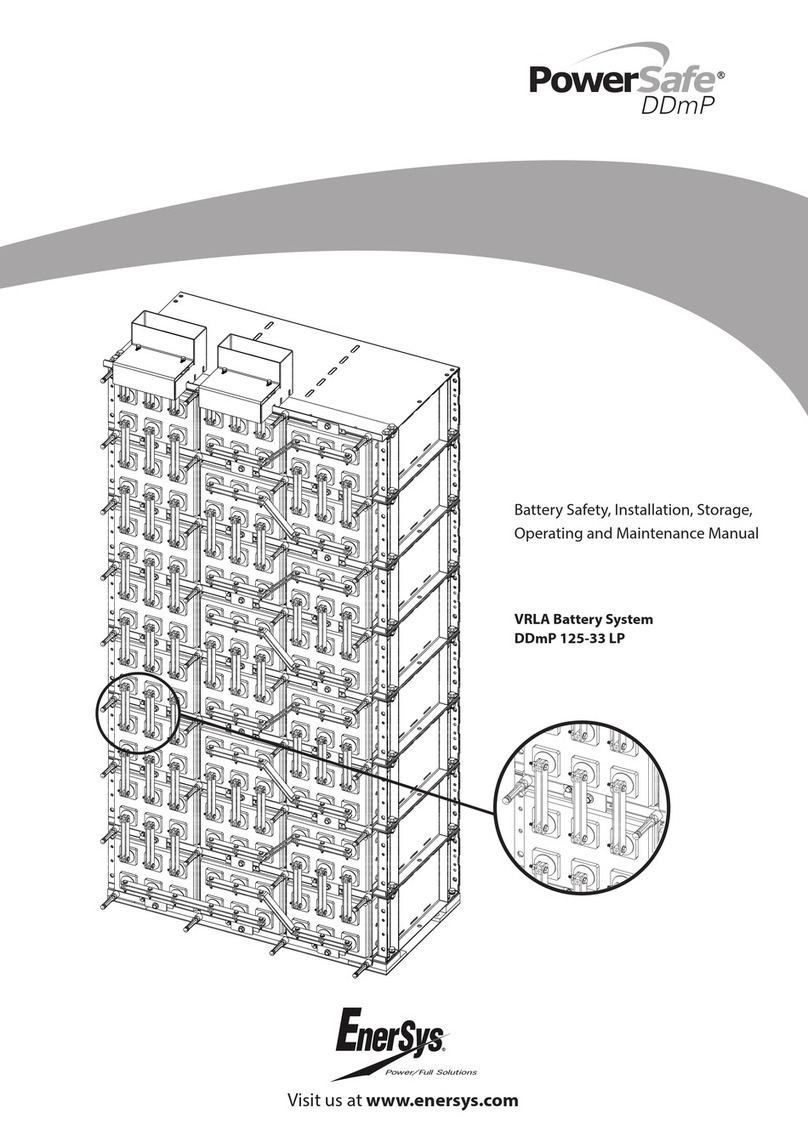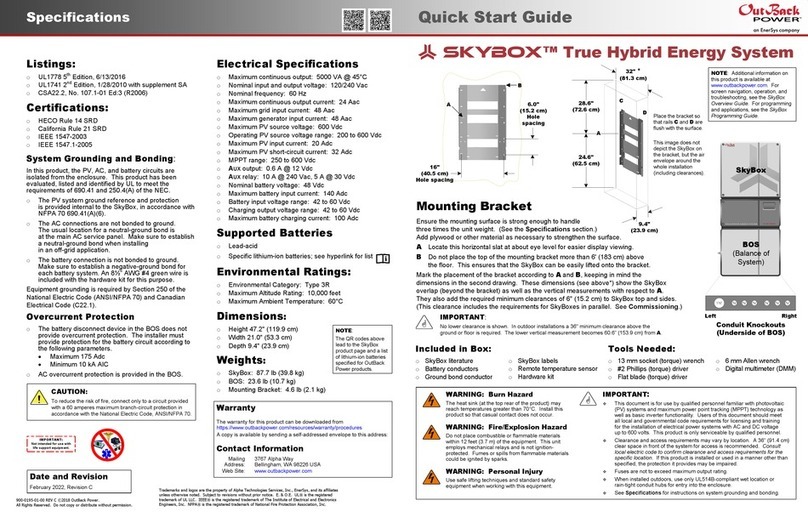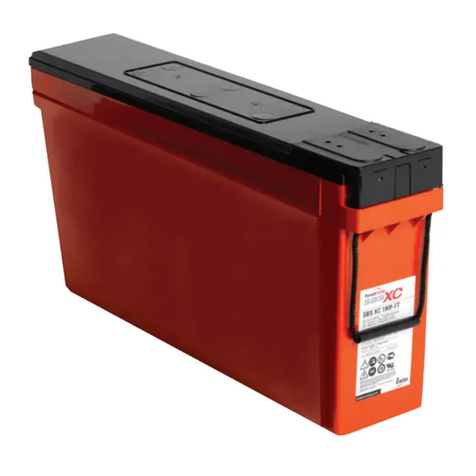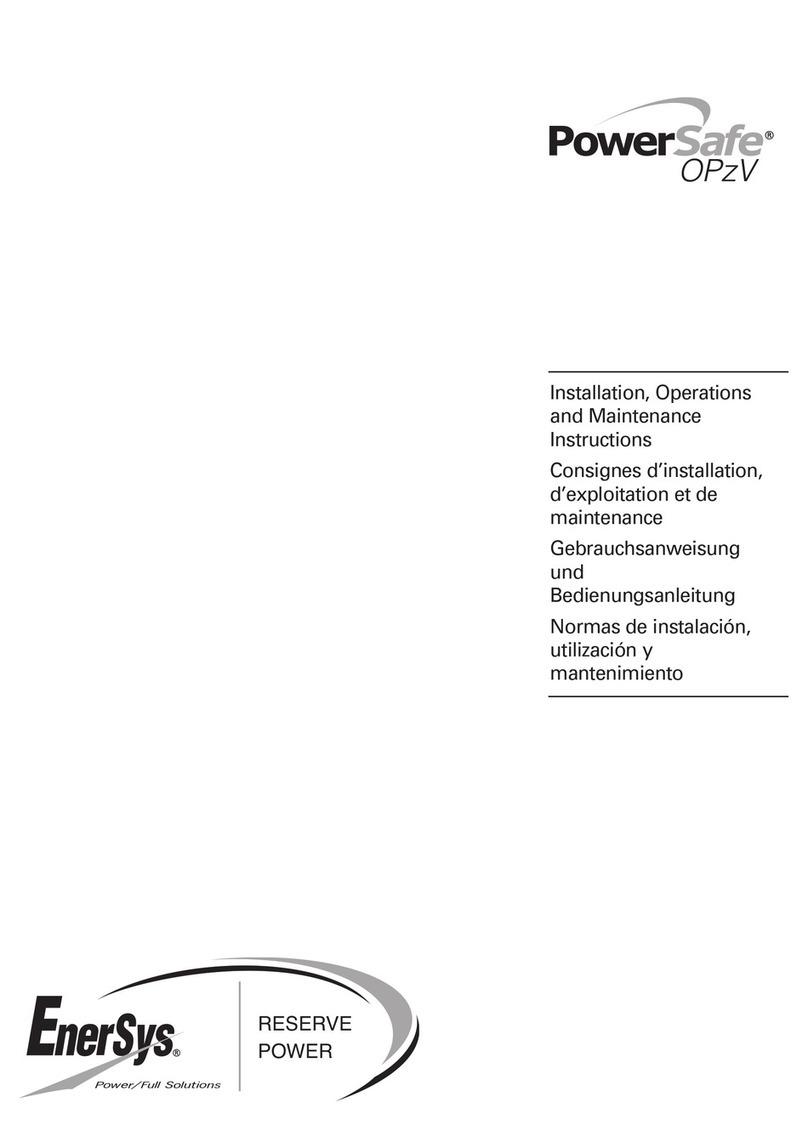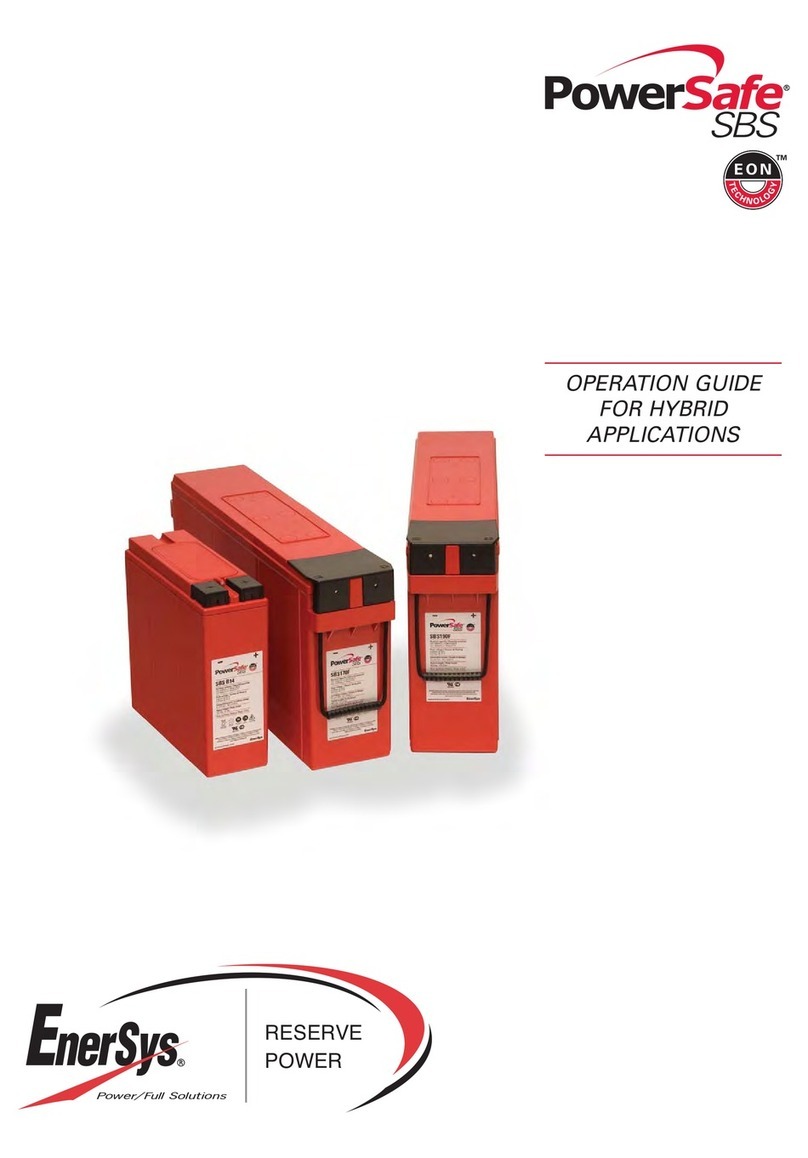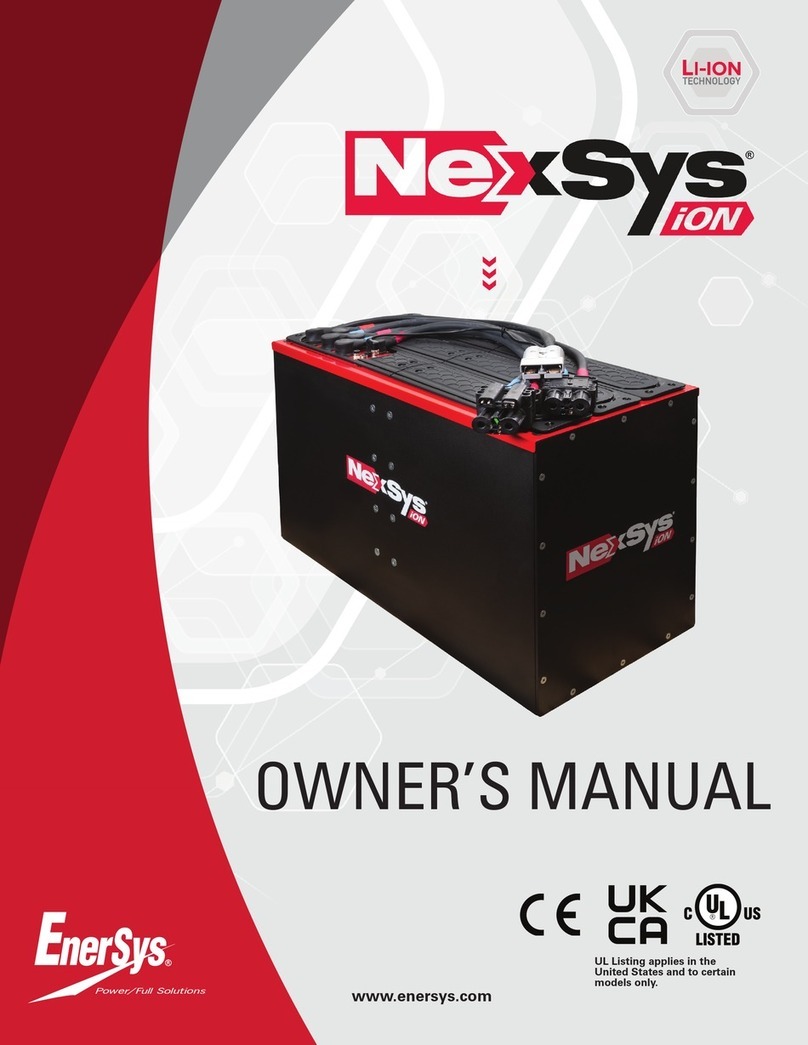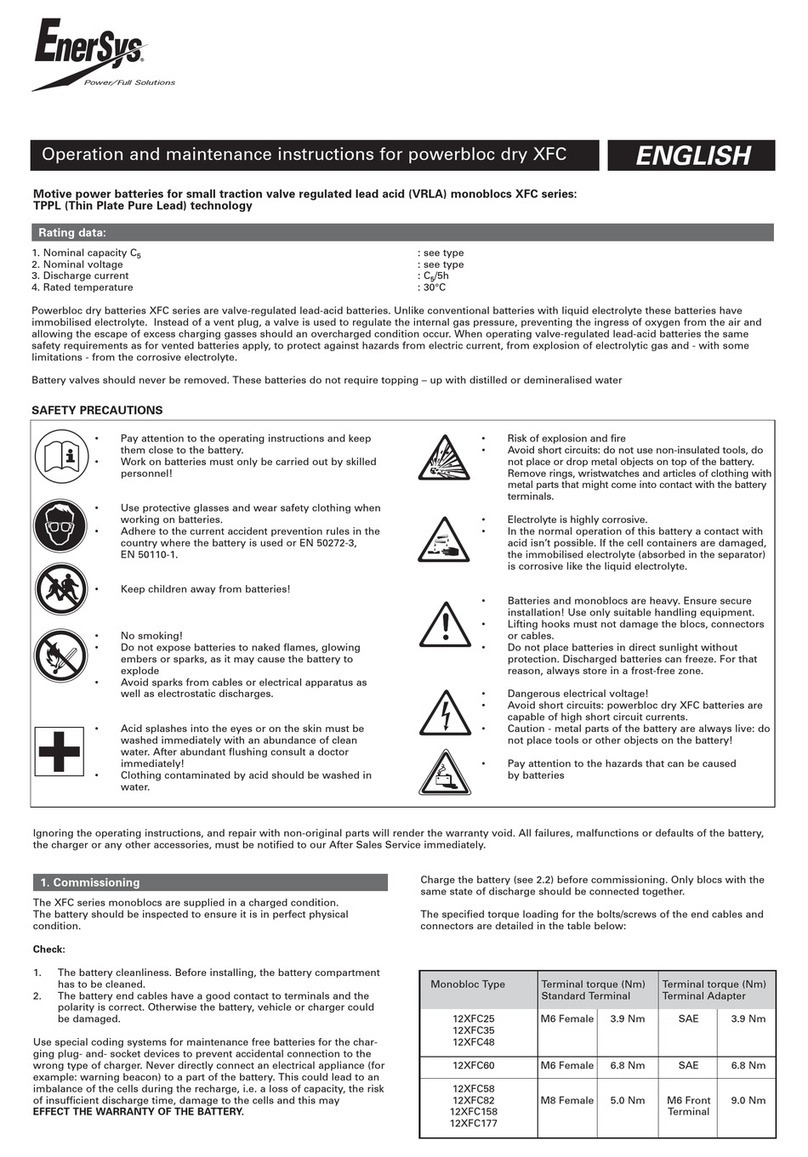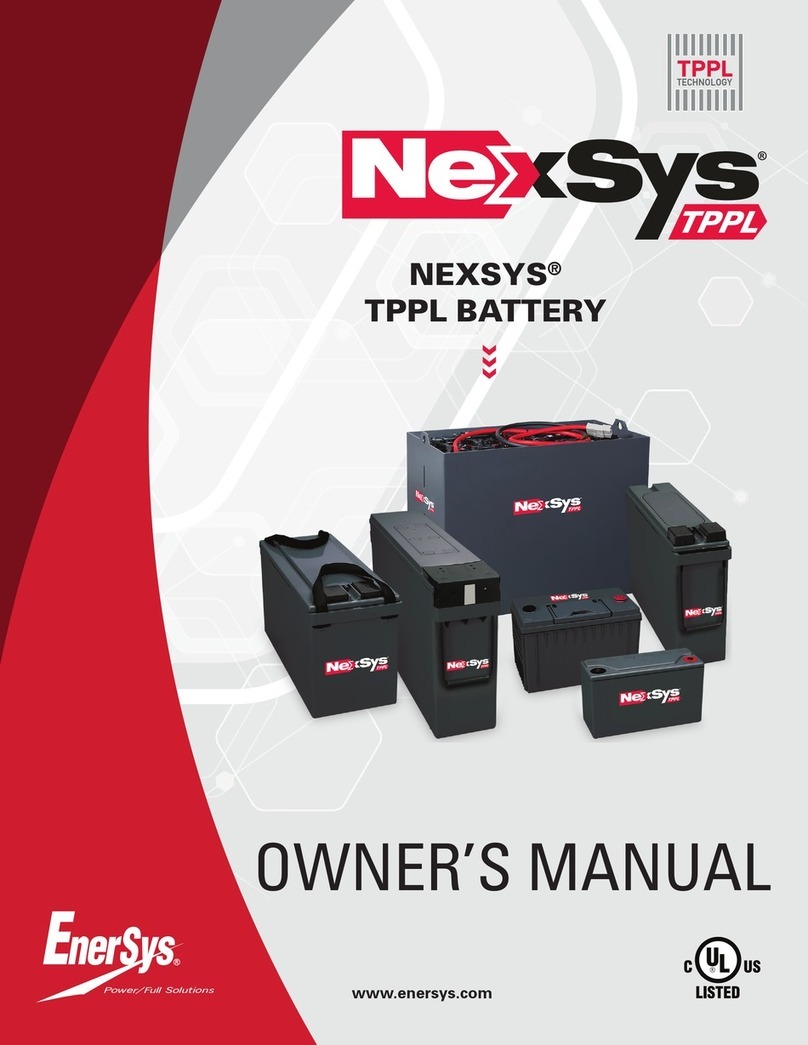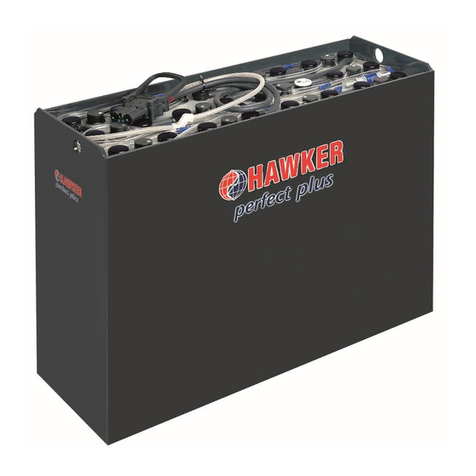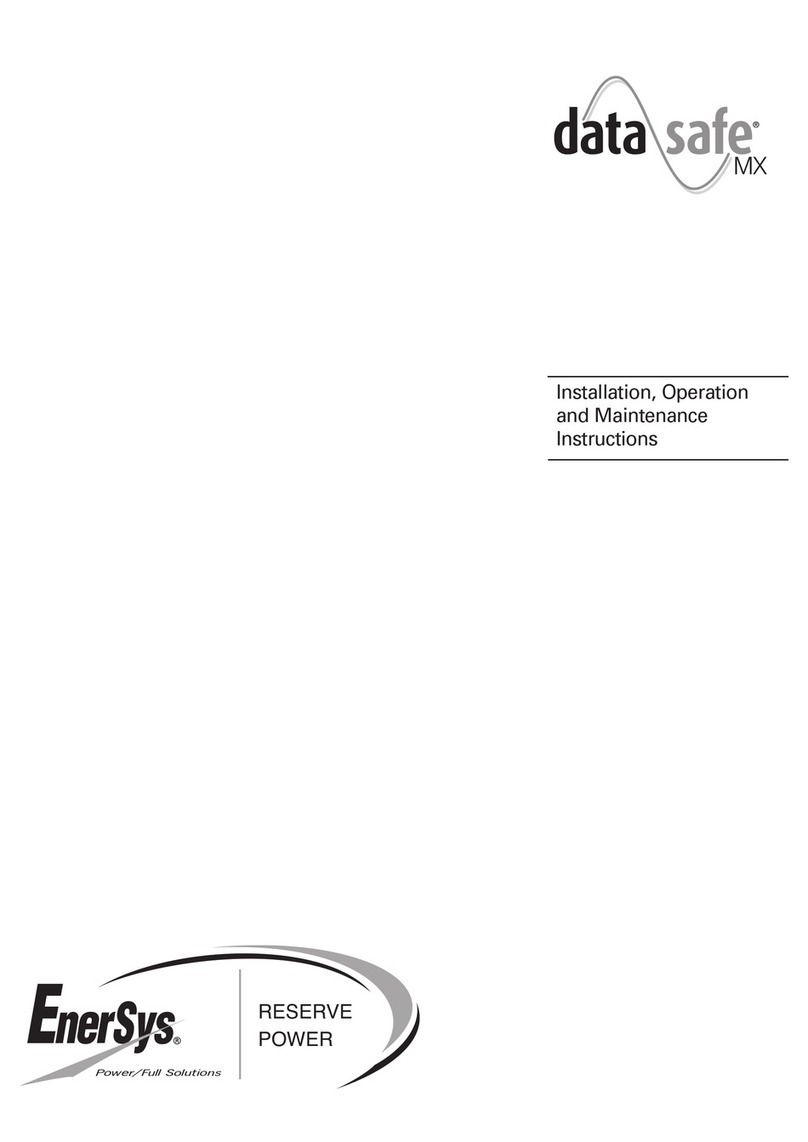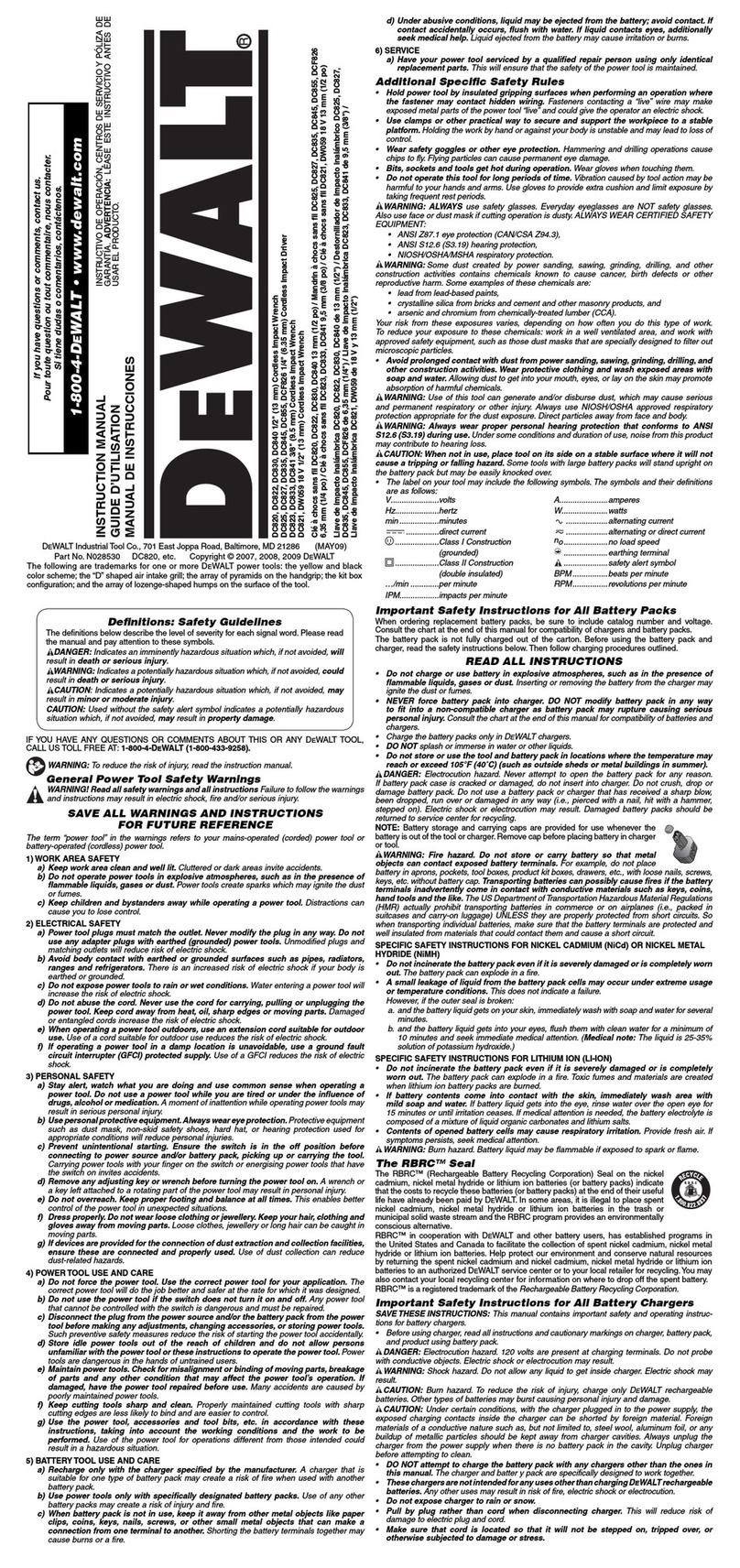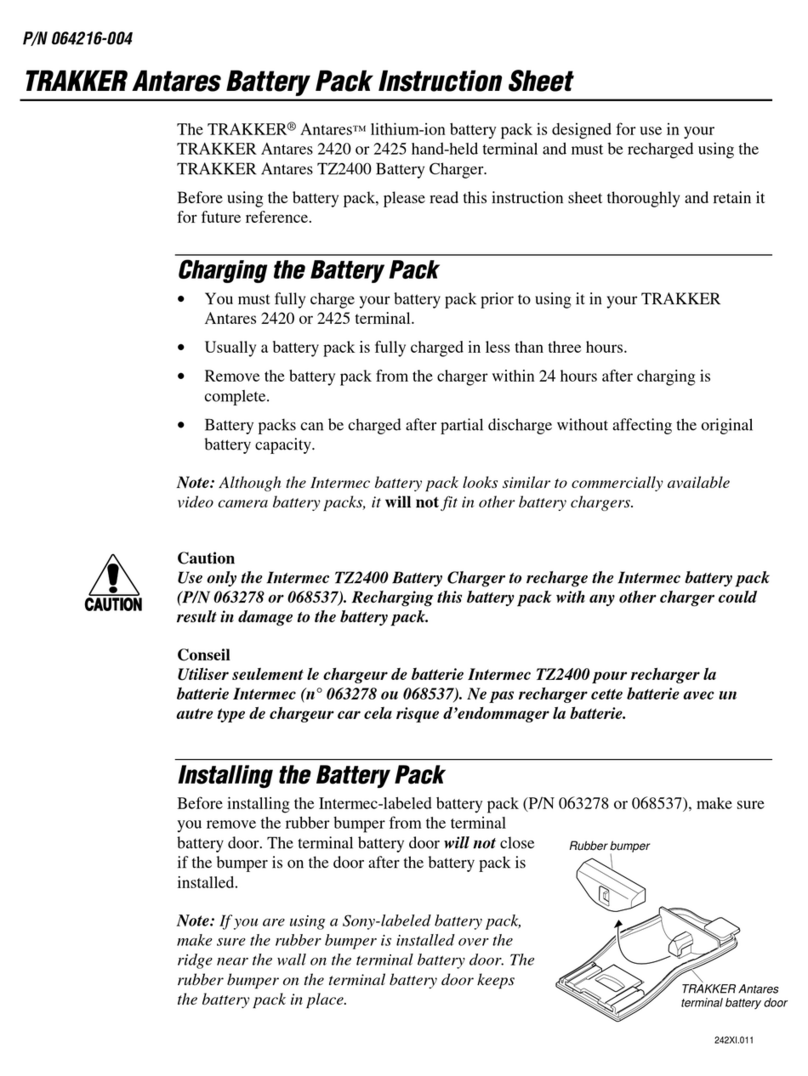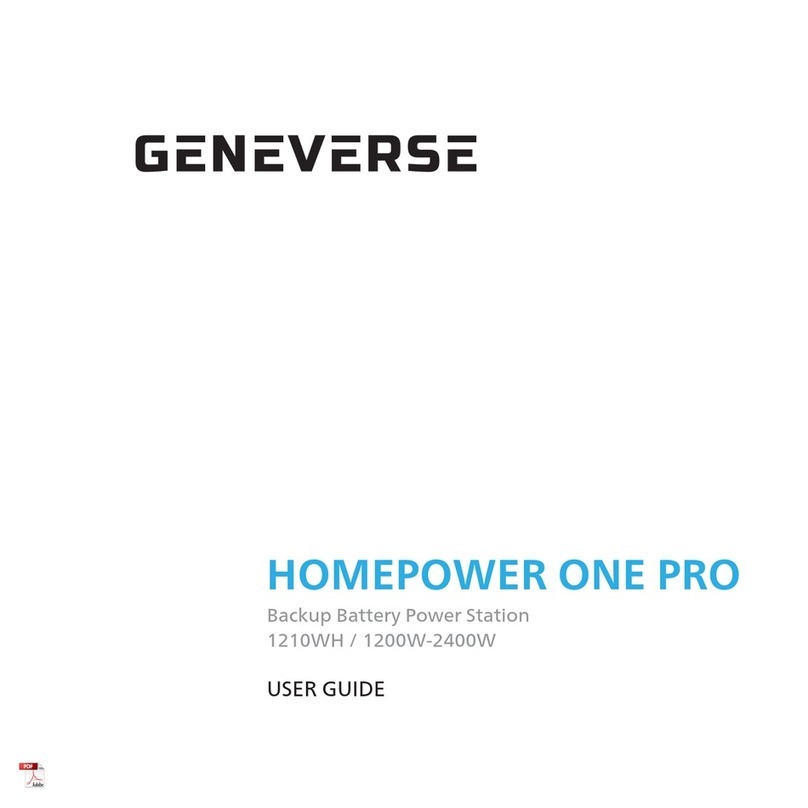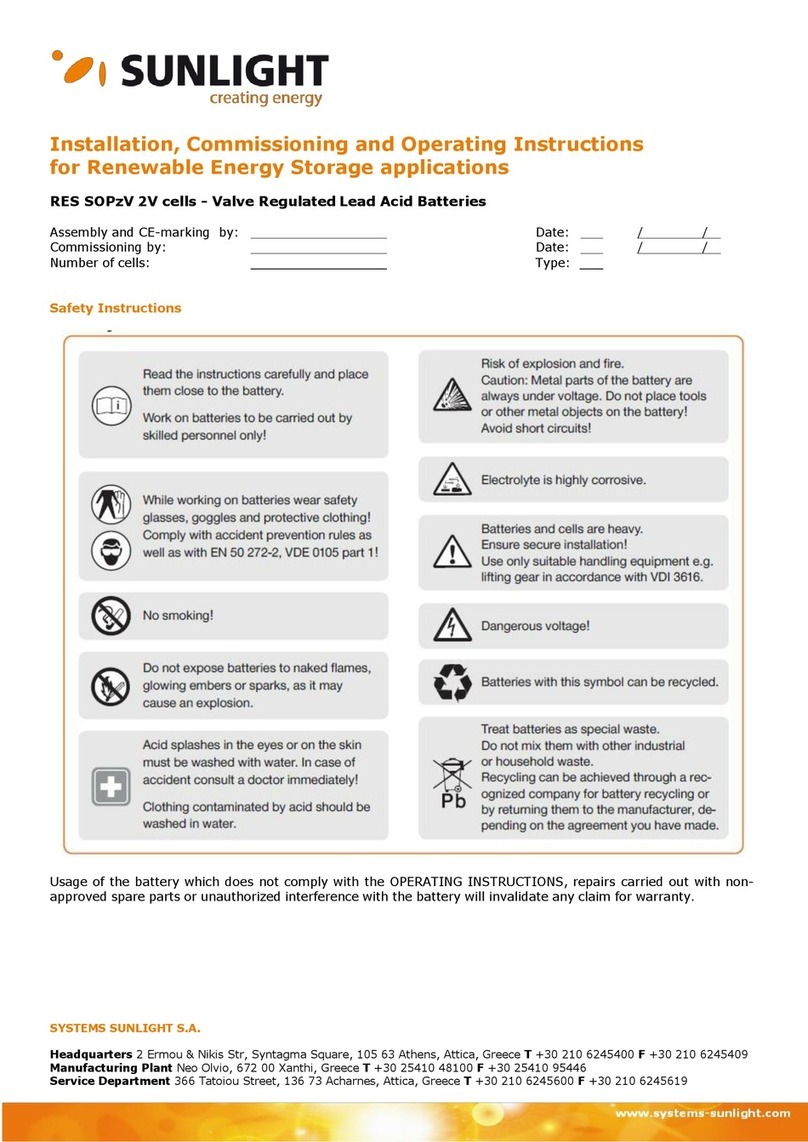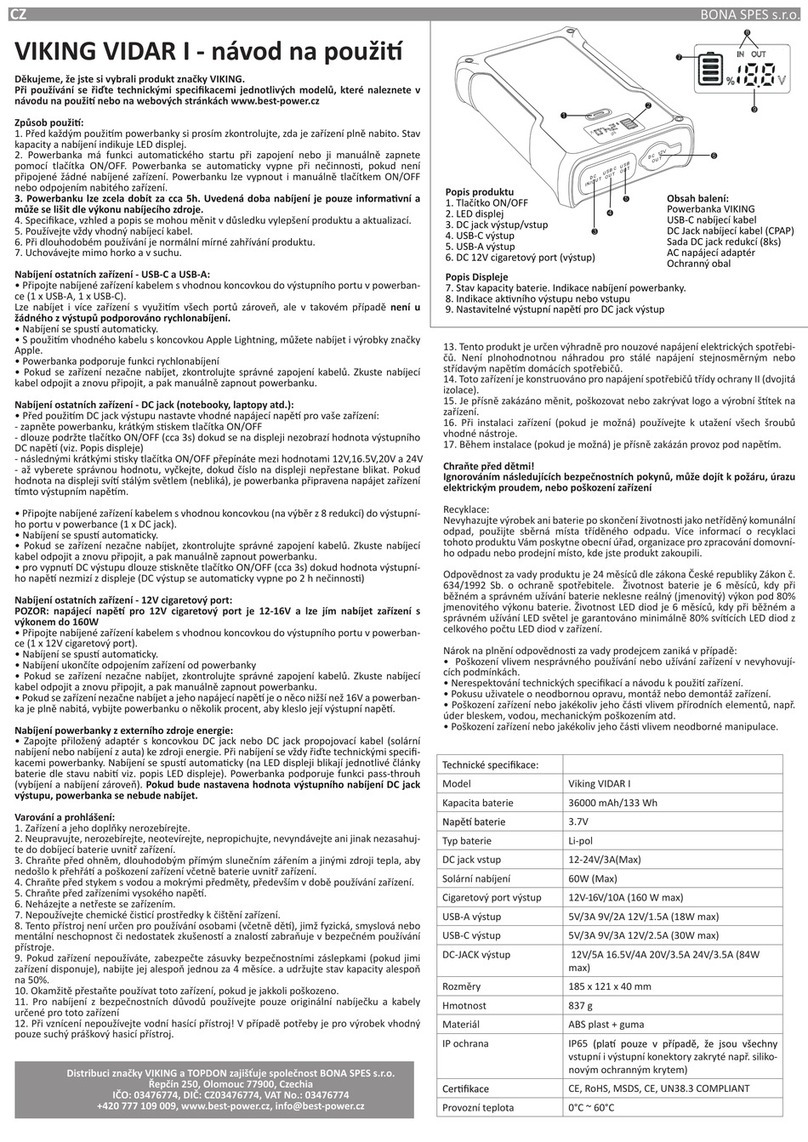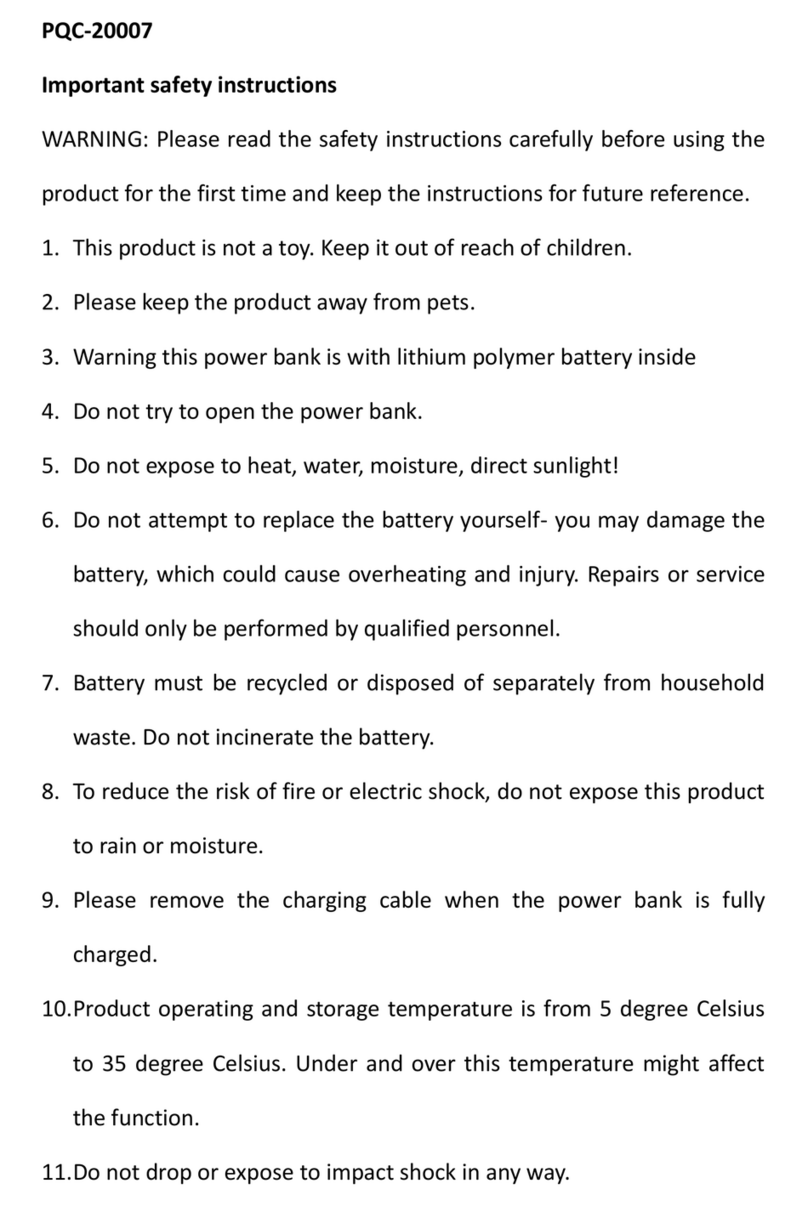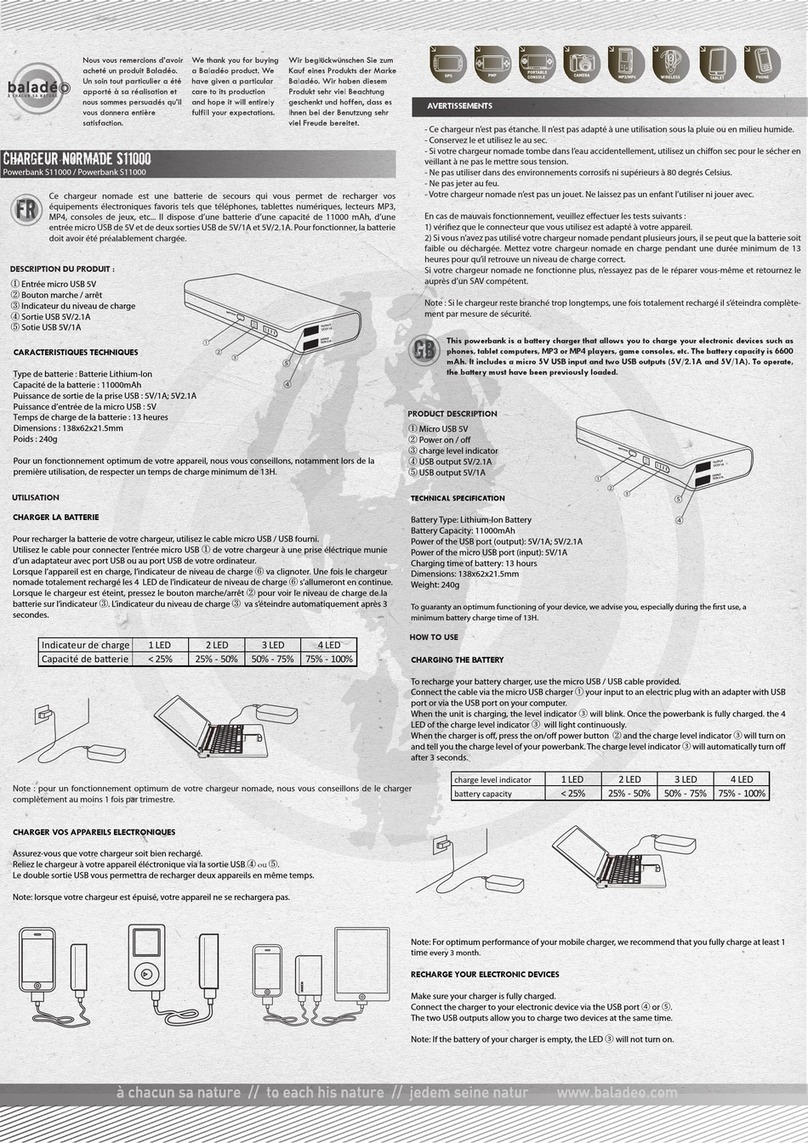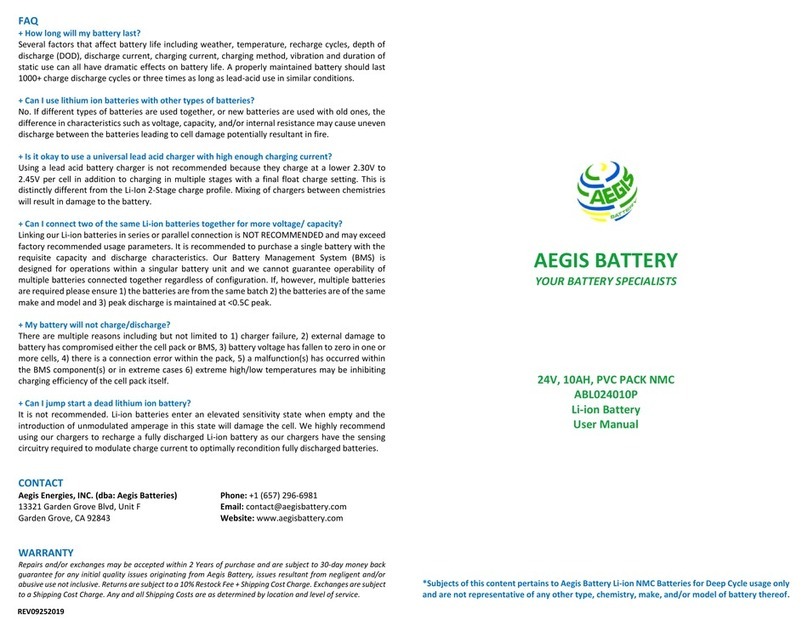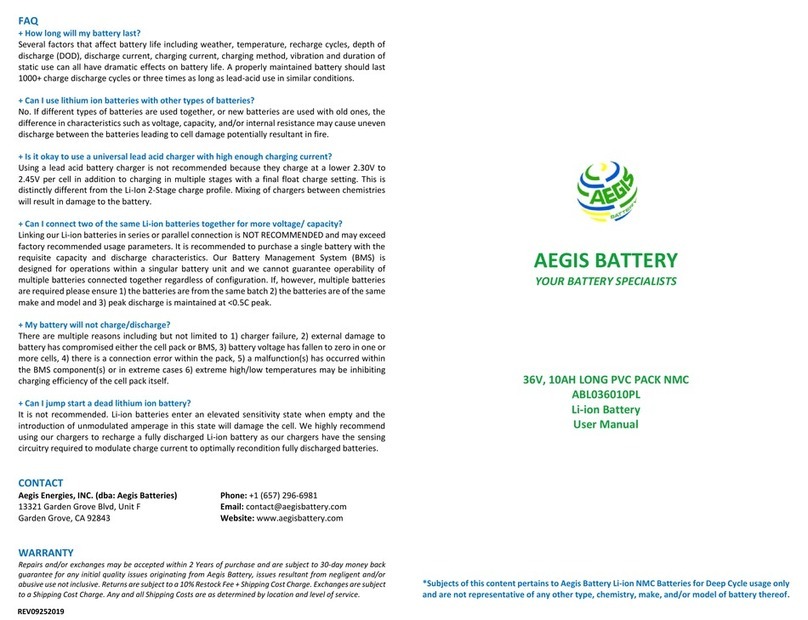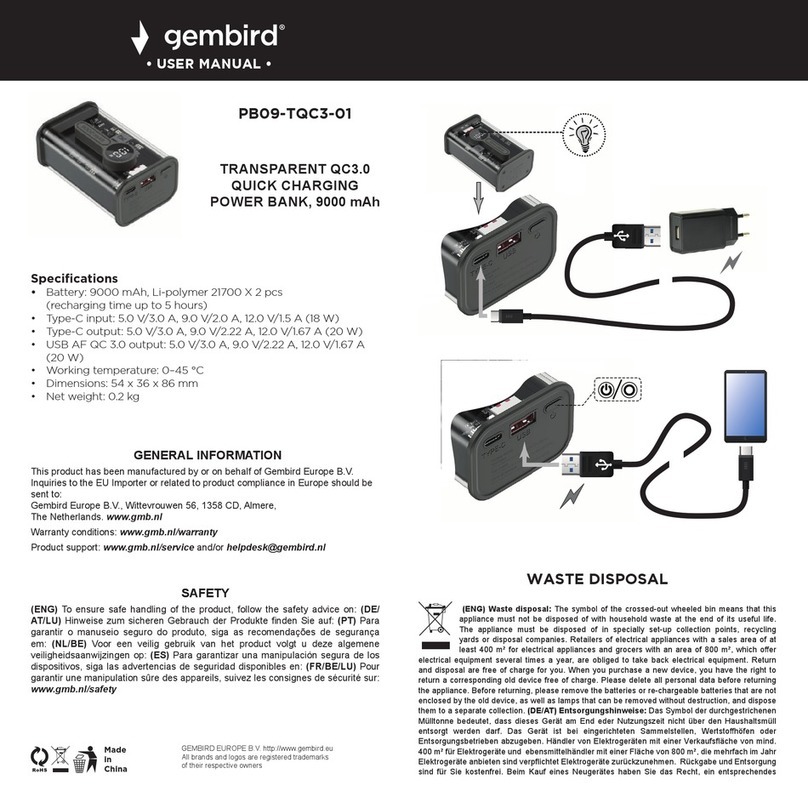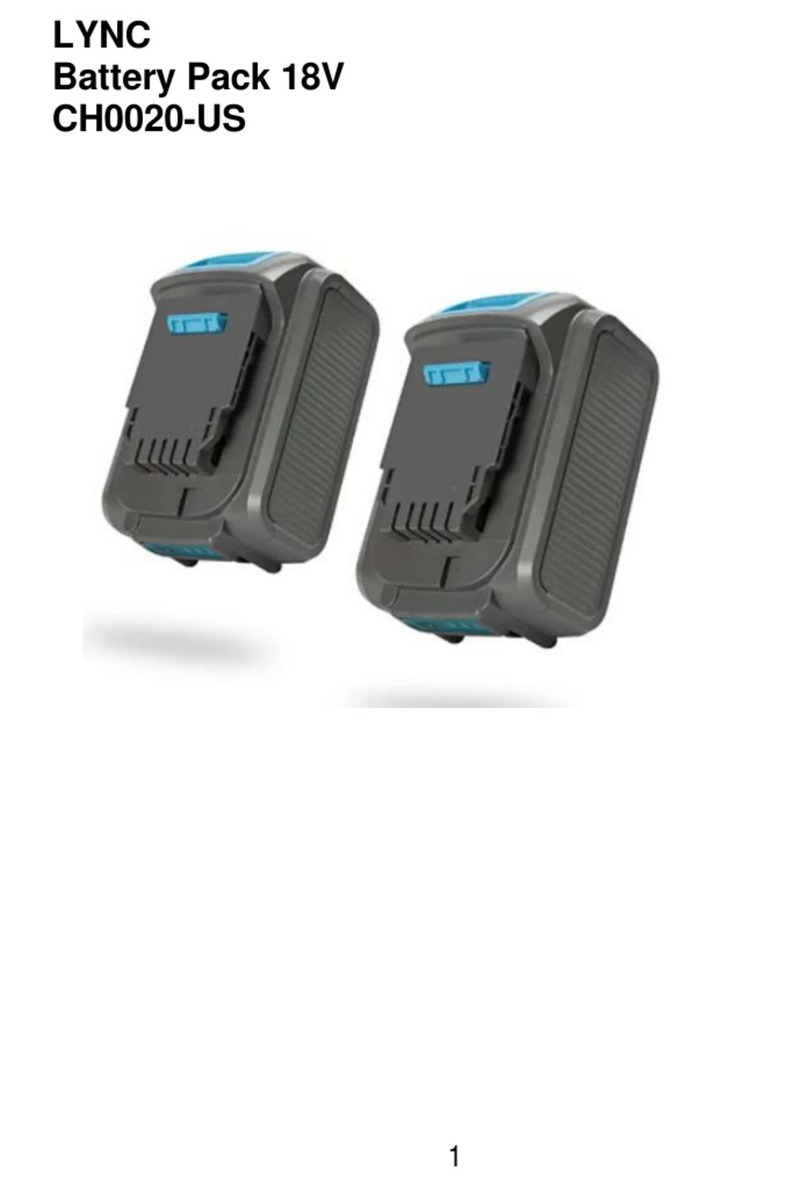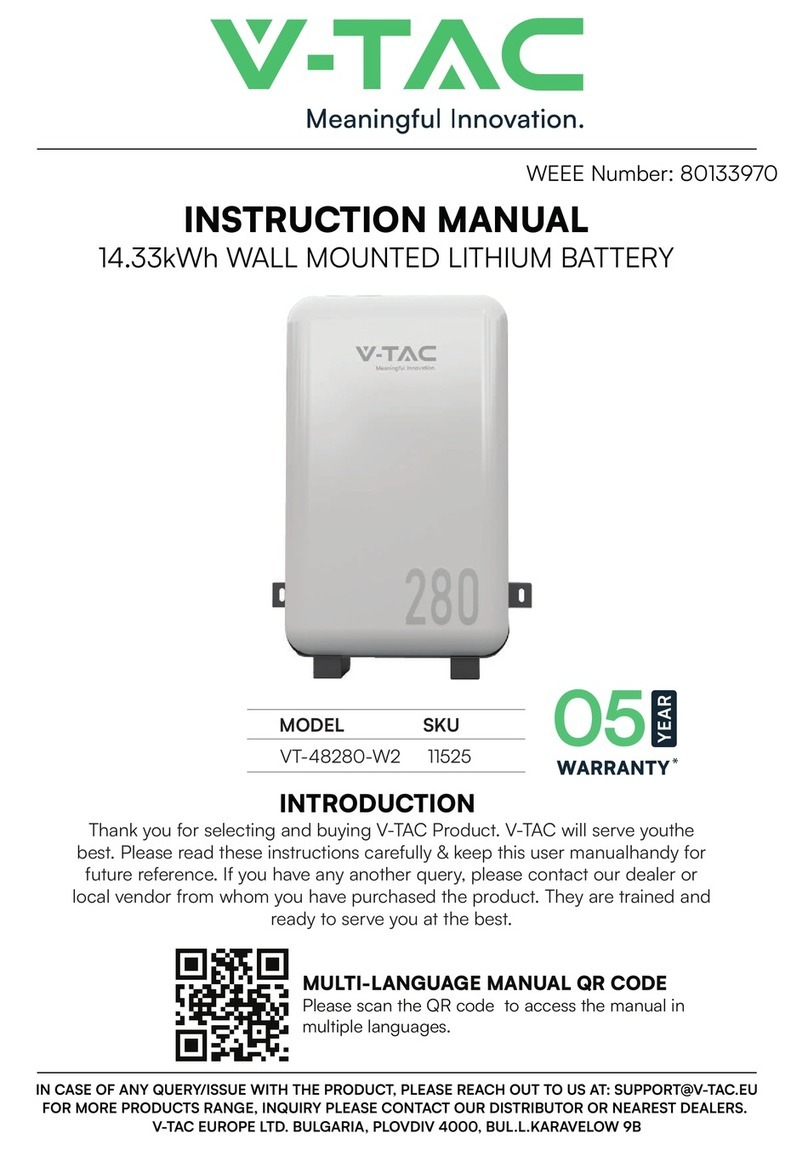
3
4. Installation
Whatever your application, SuperSafe®T FrontTerminal and 2 volt DIN-size
batteries can be mounted in any orientation except inverted. However, in
cyclic applications, EnerSys recommend to install 2 volt DIN-size cells in
horizontal orientation. In such configuration the instructions below must be
complied with.
• Do not use terminal posts to lift or handle cells.
• Do not install the cells in such a way that the box-lid bond is resting on
a runner.
• Always ensure that the arrow on the lid of each unit is pointing in
vertical orientation.
Each monobloc / cell is supplied with the terminal/connector fasteners.
On each monobloc / cell the positive terminal is identified by a “+” symbol.
Install the batteries in accordance with the instructions and/or layout
drawing, taking care to ensure correct terminal location and polarity.
Connect the blocs / cells with the connectors and fasteners provided. The
fastener torque value is indicated on the product label.
Place the insulating covers in position immediately after tightening the
fasteners.
5. Operation
The battery will give the best performance and service life when working at
a temperature of 20°C.The maximum operating temperature range is -30°C
to +45°C.
5.1. Standby / Float Operation
Constant voltage chargers are recommended.The charging voltage should
be set at the equivalent of 2.29Vpc at 20°C / 68°F or 2.27Vpc at 25°C /
77°F. The minimum charging voltage, at any temperature, is 2.21Vpc. The
recommended float voltage temperature compensation is as follows:
5.2. Charging Current
Due to the very low internal resistance SuperSafeT Front Terminal and 2 volt
DIN-size batteries will accept unlimited current during recharge but for cost
and practical purposes in float applications where recharge time to repeat
duty is not critical, the rectifier current can be limited to the load plus 0.1C10
Amps.
5.3. Grid Assist Cycling Applications
In instances where the time to repeat duty is critical the charge voltage
should be set to 2.40Vpc at 20°C, with the rectifier current limit set to a
minimum of 0.1C10 Amps. Fast charge should be stopped and reverted to
float voltage once full state of charge is reached. Further details can be
found in our application guide.
5.4. Periodic Boost Charge
In normal operation a periodic boost charge is not required. However, in
some cases such as when there has been no discharge duty over a 12
month period, a boost charge equivalent to 2.40Vpc at 20°C for maximum of
10 hours can be applied.
5.5. Discharging
Batteries must not be left in a discharged condition after supplying the load
but must immediately return to recharge mode.
Failure to observe these conditions may result in greatly reduced service life.
Accidental deep discharging
For optimum operation the minimum voltage of the system should be
related to the duty as follows:
In order to protect the battery it is advisable to have system monitoring and
low voltage cut-out.
Deep discharge will produce a premature deterioration of the battery and a
noticeable reduction in the life expectancy of the battery.
Effect of temperature
Correction factors of the capacity, according to the temperature are
illustrated in the performance datasheet.
Operation of valve regulated batteries at temperatures higher than 20°C
will reduce life expectancy. Life is reduced by 50% for every 10°C rise in
temperature.
6. Maintenance
In practice, the user usually specifies the maintenance schedule based on
site criticality, location and manpower.
However, the following may be used as a suggested maintenance schedule.
• Monthly (record all readings)
- Measure the battery string voltage. If necessary, adjust the float
voltage to the correct value.
- Check the ambient temperature in the immediate environment.
• Every six months (record all readings)
- Measure the battery string voltage. If necessary, adjust the float
voltage to the correct value.
- Measure individual bloc / cell voltages. After 6 months of operation
blocs / cells should be within 5% of the average voltage value.
- Check the ambient temperature in the immediate environment.
- Inspect for contamination by dust, lose or corroded connections.
If necessary, isolate the string/bloc/cell and clean with a damp
soft cloth. Warning: Do NOT use any type of oil, solvent, detergent,
petroleum-based solvent or ammonia solution to clean the battery
containers or lids. These materials will cause permanent damage
to the battery container and lid and will invalidate the warranty.
Keep a logbook to record values, power outages, discharge tests, etc. An
autonomy check can be done once a year.
Contact EnerSys®if you have any questions regarding maintenance.
7. Disposal
SuperSafe®T FrontTerminal and 2 volt DIN-size batteries are recyclable. Scrap
batteries must be packaged and transported in accordance with prevailing
transportation rules and regulations.
Scrap batteries must be disposed of in compliance with local and national
laws by a licensed or certified lead acid battery recycler.
Sup
Temperature (°C / °F)
10/50 15/59 20/68 25/77 30/86 35/95
40/104
Recommended 2.33 2.31 2.29 2.27 2.25 2.23 2.21
Minimum 2.31 2.29 2.27 2.25 2.23 2.21 2.21
Duty Minimum end voltage
5 min ≤ t ≤ 1h 1.65V
1h ≤ t ≤ 5h 1.70V
5h ≤ t ≤ 8h 1.75V
8h ≤ t ≤ 20h 1.80V
